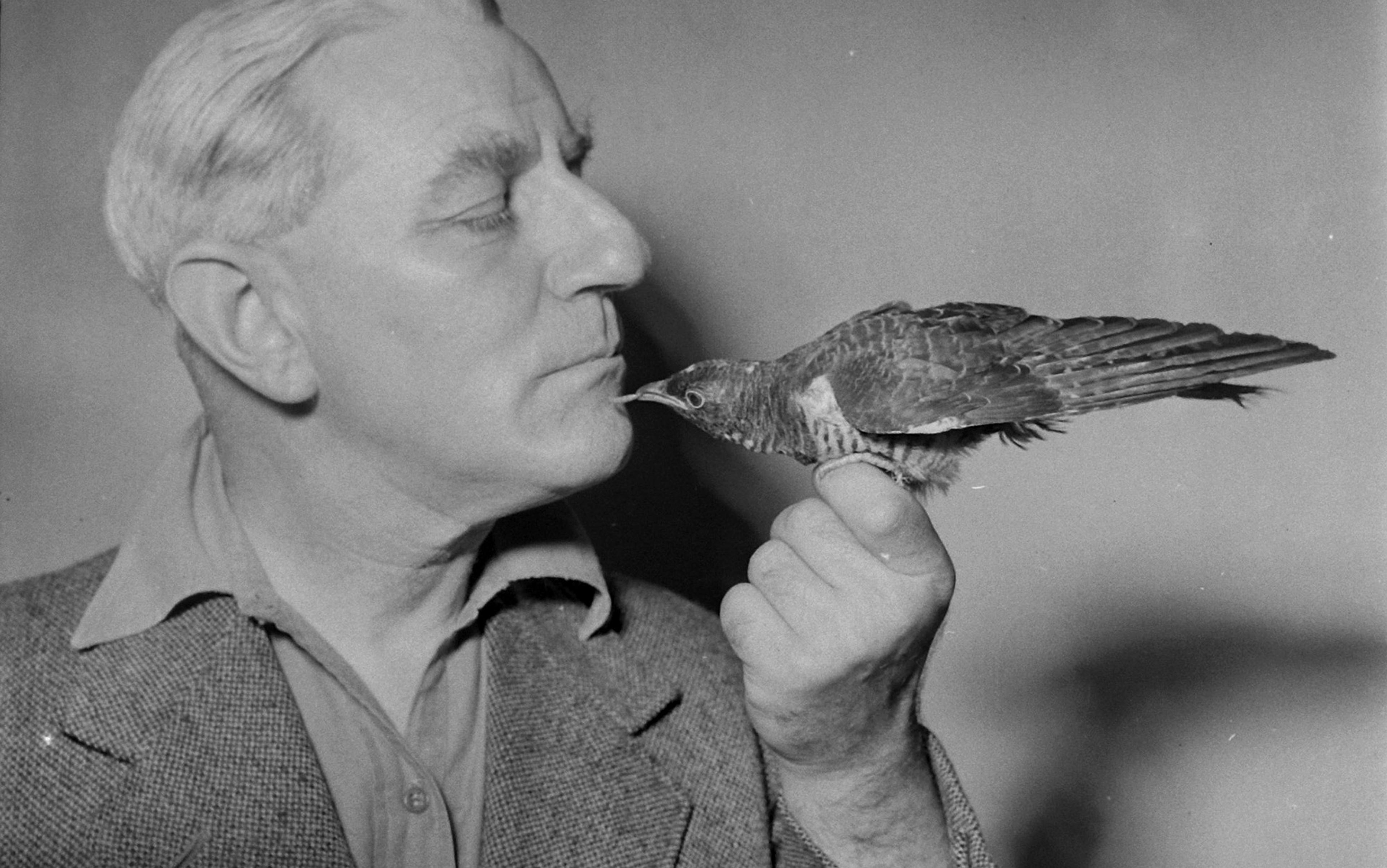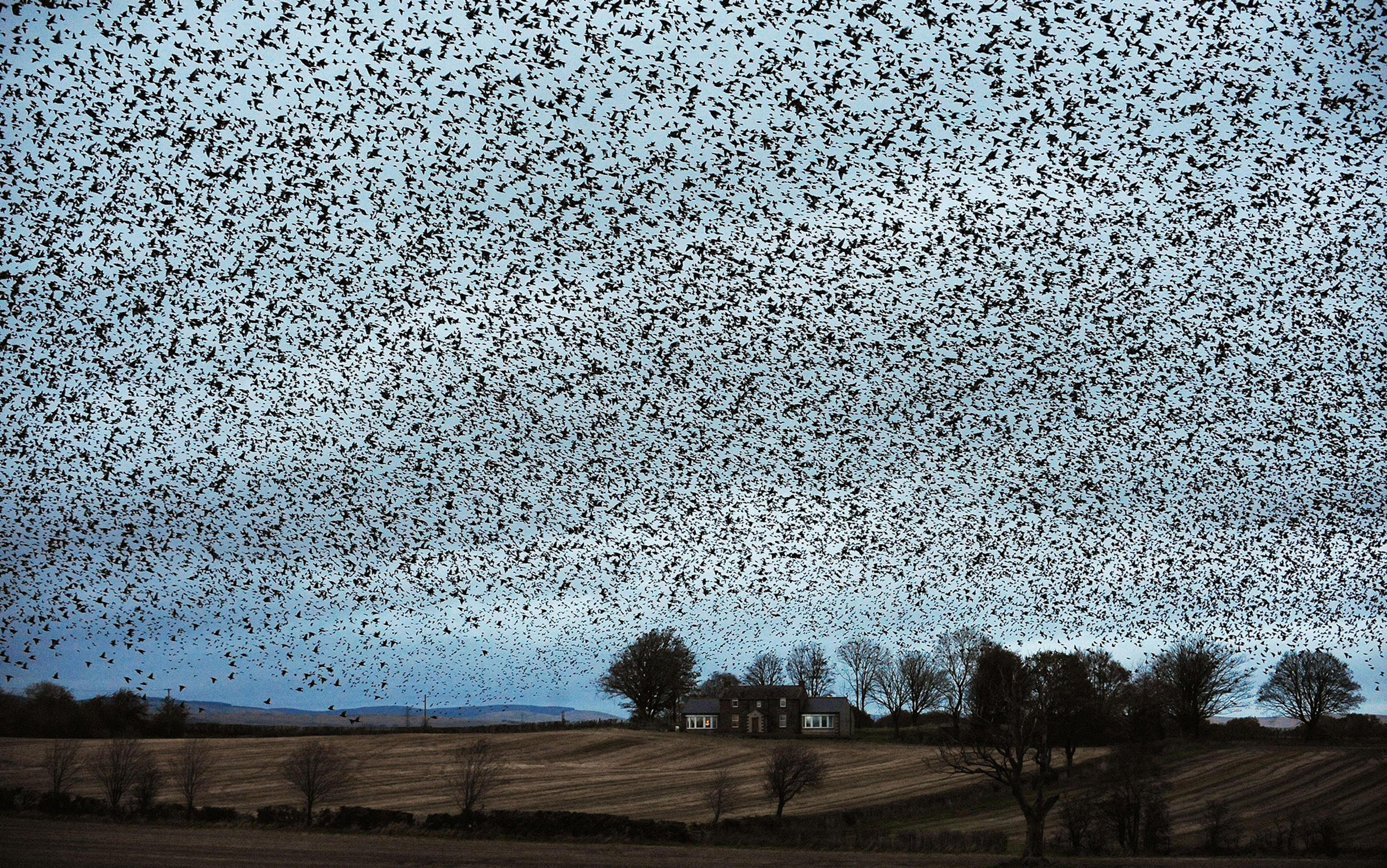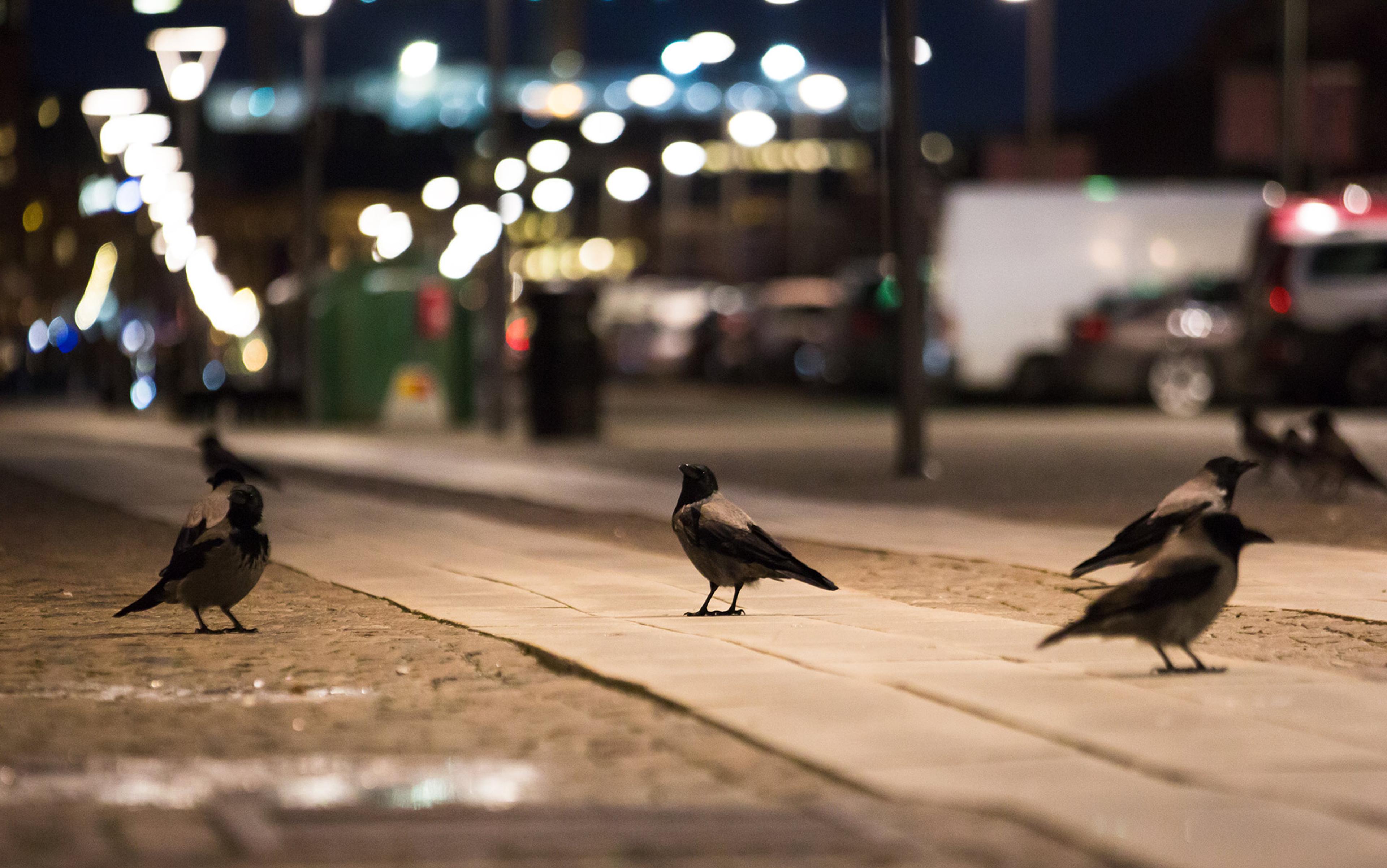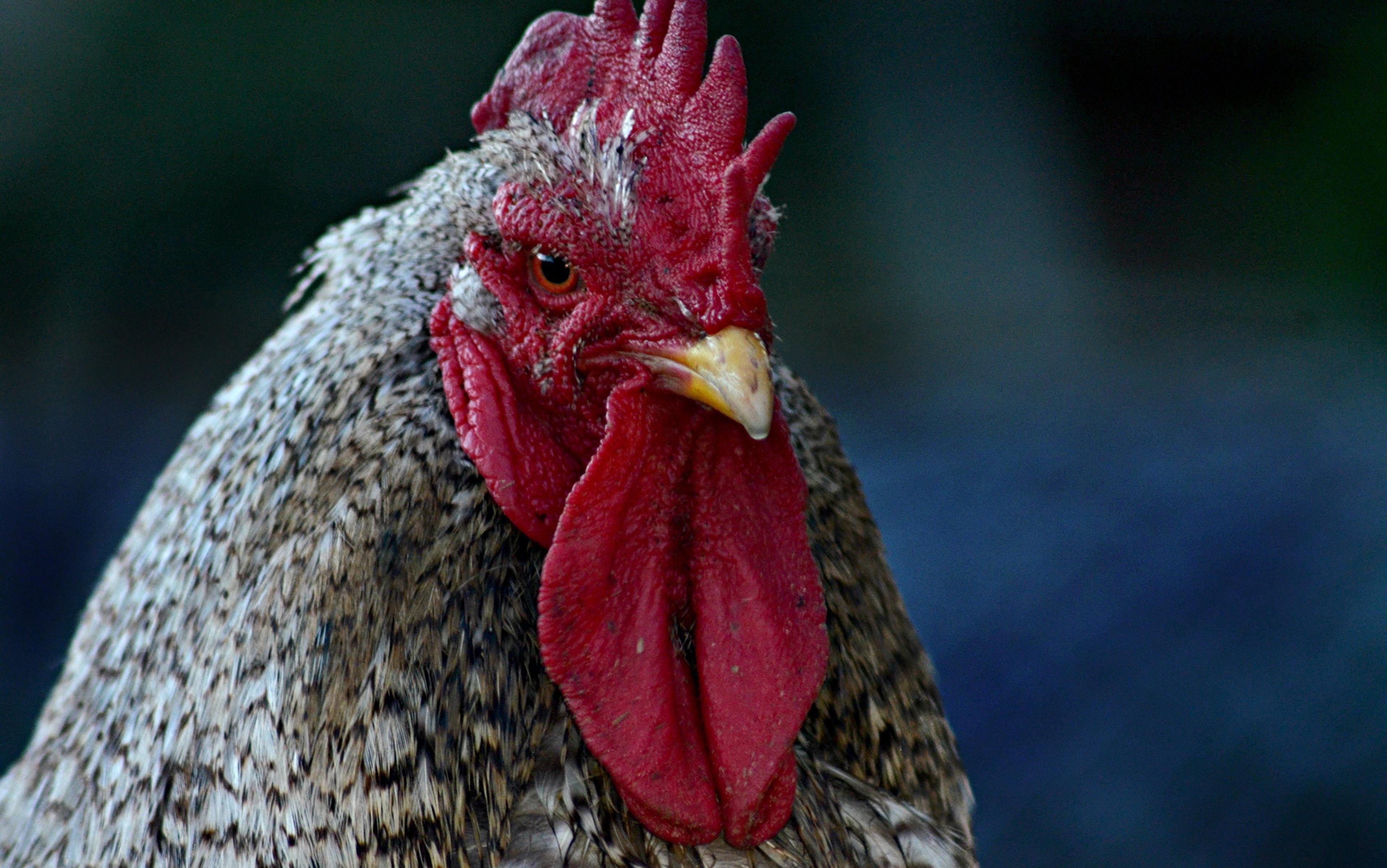It’s a strange, sharp-winged, grey bird with button yellow eyes, a downcurved beak and an expression of perpetual surprise, and its song is one of the best-known and best-loved in Britain. But most people have never seen a cuckoo, and it is getting harder for anyone to do so. Over the past quarter of a century, England has lost more than 60 per cent of its cuckoos and no one knows why. Habitat loss, climate change, or the myriad perils that cuckoos encounter on migration are the likeliest culprits, and the latter is the hardest to research.
We’ve only ever had the vaguest idea of where British cuckoos spend the winter, and no idea of the routes they take there and back. But we are starting to understand. For the past two years, the British Trust for Ornithology (BTO) has fitted satellite tags to British-trapped cuckoos and tracked their migration routes to Africa and back. The project’s ‘band of feathered brothers’, as the national press have christened them, have attracted huge media attention. And they are uncovering all sorts of ornithological secrets.
The BTO project is important. But it carries with it more than science. When I read that BTO cuckoos are ‘missing in action’, I think of wars overseas. When I look at the project’s migration route maps, I wonder how satellite-tagged ‘sentinel animals’ such as these cuckoos fit into our surveillance-hungry world, and into the digitised dreams of network-centric war. I remember, too, several international incidents in the past few years in which tagged and banded birds have been taken as spies — as feathered, living drones. And I start to wonder how notions of nationhood, defence, secrecy, and surveillance are caught up in how we think about cuckoos.
When I was small, I read a book by a man called Maxwell Knight. It was the story of how he had reared a baby cuckoo. Back then I thought A Cuckoo in the House was just another animal book from the 1950s, and that Knight was just an ordinary man. But the BTO project spurred me to read it again, this time knowing more about Knight. On rereading, I found it a very different book — a fascinating and troubling fable about the meanings we give to animals, and a book that unwittingly revealed all sorts of strange collisions and collusions between natural history and national history in post-war Britain.
This, then, is the story of Maxwell Knight — the man called M — and a cuckoo called Goo. Knight was a tall, patrician British intelligence officer in charge of MI5 departments dealing with counter-subversion on home ground. And yes, as ‘M’ he was the inspiration for James Bond’s controller. From the 1930s to the end of the Second World War, Knight placed agents in organisations such as the British Union of Fascists and the Communist Party of Great Britain. He was an extraordinary character: secretly gay, a writer of appalling thrillers, a keen jazz trumpeter, a disciple of the dark magic of Aleister Crowley, and an inveterate keeper of animals — crows, parrots, foxes and finches all shared space with agents in Knight’s safe house in the Home Counties.
After the war ended, Knight began a second career as a BBC radio naturalist. This new and much-loved Knight was an avuncular, tweed-clad expert, a regular fixture on programmes such as Country Questions, The Naturalist, and Nature Parliament. On air he described the habits of British wildlife, and told young naturalists how to rear tadpoles and how to hone their observational skills by playing ‘Kim’s Game’, tellingly named after the hero of Rudyard Kipling’s novel Kim (1901) about a boy training to be a spy. From a clandestine career to an audience of millions, agent-runner to family naturalist, Knight appeared to have had a spectacular change of identity. But that Kim’s Game reference is a giveaway: the worlds of naturalist and spy were closer than one might think.
‘He always had something live in his pocket’
There are many similarities between the observational practices of field naturalists and spies. ‘Birdwatcher’ is old British intelligence slang for a spy, and if you read Robert Baden-Powell’s Scouting for Boys (1908), you’ll see how long natural-history field-craft has been seen as a preparation game for war. In his MI5 communications, Knight had once recommended that agents should be taught ‘when, where and how to take notes, memory training and accurate description’. And on the radio he gave exactly the same advice to young naturalists.

Who’s controlling who? Knight was amazed that Goo became quite so tame
But it is Knight’s animals, and their relation to his secret life, that are most relevant to this story. He shared his London flat with a bear cub, a baboon, vipers, lizards, monkeys, exotic birds and rats. And they were not confined to his home. ‘He always had something live in his pocket,’ recalled John Bingham, an MI5 colleague. Writers on Knight are fascinated by his animal-keeping, but the animals themselves are always treated as ciphers: we are never given an inkling of his motives for keeping them, apart from the animals being, perhaps, a kind of camouflage or misdirection. In the words of the literary critic Patricia Craig, they ‘helped to gain him a reputation for eccentricity, certainly an asset in the devious world of MI5, where a lot depends on your ability to keep things dark, to impress your associates, and to spring surprises’. But Knight’s animals were no simple camouflage.
Despite his own exotic pets, Knight championed the keeping of British wildlife. In his book Taming and Handling Animals (1959), he described them as ‘infinitely more instructive than creatures from far-away climes’. This sentiment is much in keeping with the sensibilities of the period, for, during the war, British wildlife had become firmly embedded in myths of national identity. As invasion anxiety and spy-fever swept the nation, concerns about allegiance and patriotic identity rapidly colonised both popular and scientific understandings of wildlife. David Lack’s The Life of the Robin (1947), about that most British of birds, took pains to show that robins were ‘not, in fact, completely “British” in the east of England’, and ‘perhaps most “British” of all in Ireland’.
Meanwhile, Norfolk farmers were shooting continental skylarks that wintered on their farms: headlines in local newspapers proclaimed that ‘Skylarks that sing to Nazis will get no mercy here’. These newly nationalised British birds and animals increasingly served as points of emotional attachment to the nation: they were animals that meant home. Peter Scott, son of the ill-fated Antarctic explorer, confessed that he went to war partly because he wanted to defend the mallards and teal that nested in reed beds along the Devon coast.
National and natural histories blurred. In a series of wartime radio talks, the evolutionary biologist Julian Huxley, brother of the writer Aldous, explained that birds had special importance because they were the means through which you oriented yourself to your country. The yellowhammer’s song, for example, was ‘the best possible expression of hot country roads in July’. At a time of national crisis, naturalists knew their nation deeply and personally, and so were accorded a trustworthiness denied to non-naturalists — an ignorant bunch, unable to fully recognise their own country. Julian Huxley was very clear on this: ‘An American landscape may now and again look surprisingly like an English one,’ he said, ‘but its birds will speedily remind you of its alien character.’ I know my country — trust me, I’m a naturalist.
Knight’s radio persona was built on such patriotic understandings: his Letters to a Young Naturalist (1955) — a fictional correspondence between a nature-minded boy and his naturalist uncle — opens with the following: ‘My Dear Peter. So you want to be a naturalist! You could not have chosen a better hobby, nor a better way of getting round me to help you. Apart from you becoming an England cricketer in the future I can’t think of anything I could have wished you to do more.’
Ordinary pets held little interest for Knight. He was interested in wild animals: the ones you had to tame. In his books, he defined the term with care. First, he explained, animals might pass as tame, but not be; they might turn. And domesticated animals might appear to be tame, but they are liable to turn spiteful and difficult. Starving animals could also appear to be tame, but aren’t; hunger has merely deadened their fear. These animals are not trustworthy. To trust an animal, he wrote in Taming and Handling Animals, one must tame it oneself, make it ‘gentle and tractable’:
The accent is on the word ‘make’ because to tame a wild creature means that we have to gain its confidence, remove its natural fears, and in many cases even inspire affection, so that the animal concerned will feed readily and regularly; will look well; will refrain from biting and other forms of attack and will accept us as well disposed towards it ― or possibly as one of its own kind.
One of its own kind. There’s a world of counter-subversion right there, a ghosting of the topologies of his secret life. In his books, Knight wrote of the correct relationship between animal and handler in almost exactly the same terms he’d used to describe the correct relationship between agent-runner and agents — one in which the officer must ‘at all costs make a friend of his agents’ and the ‘agents must trust the officer’. Most important of all, in both animal-taming and agent-recruiting, ‘a basis of firm confidence must be built up’.
Our model of animal-keeping today commonly rests on an empathetic understanding between handler and wild creature. Knight’s does not. For him, the lines between animal and human were sharply drawn. His animals were mirrors only so far as they reflected their keepers’ expertise, and their tameness and trust were to be valued as evidence of the character and abilities of their owner. ‘A fool of a person,’ he said, ‘will never own an intelligent pet; a nervous person will never succeed in winning the confidence of any wild creature’. And apart from demonstrating how skilful you were at gaining trust, animals had other uses: they were epistemological puzzles to solve. They allowed you to ‘observe such things as the comparative intelligence of different species’, or ‘their readiness to adapt themselves to conditions of captivity’.
The boundaries between Knight and his animals were firmly policed, just as they were with his agents. In both cases, the aim was a familiar, expert, yet distanced, knowledge. June Miller, one of Knight’s agents and long-term companion, acerbically commented that ‘M was always curious about animals, not fond of them; though ours, of course, were always loved sincerely by me.’
Knight’s distanced model of animal-keeping ran into trouble when he decided to raise a cuckoo. It was a species for which Knight had a special regard. It’s not difficult to see why. Cuckoos doubled not only as symbols of deep and abiding Englishness (their spring arrivals noted each year in the letters page of The Times), but also of suspicion, mystery and deceit. They laid their eggs in other birds’ nests and their newly hatched chicks, after ejecting the eggs and chicks of their hosts, were raised by foster-parents that seemed quite unaware of the deception played upon them.
Parasitic, scientifically baffling, the cuckoo’s ambiguous moral status revolved around concepts of cuckoldry, duplicity, sexual confusion, and even species boundaries themselves: in books and in heated correspondence in The Spectator, the redoubtable Bernard Acworth, doyen of the Creation Science Movement, repeatedly claimed that cuckoos were, in fact, hybrids between male cuckoos and the female birds of host species.
The cuckoo was the most fascinating bird pet he had ever owned … Of course it was: he identified with it hugely, saw it mostly as himself
The cuckoo also starred in a spectacular piece of popular science of the period. Using new techniques of flash photography, Eric Hosking and Stuart Smith’s book Birds Fighting (1955) made overt the place of the cuckoo in fables of nationalism, aggression and defence. Smith begins by quoting Pliny’s description of the cuckoo as a ‘common object of hostility among all birds’ because ‘it practises deception’. The book is a sort of ornithological death-match, a series of staged fights, photographed in blow-by-blow detail, of well-known, well-loved British songbirds tearing apart stuffed cuckoos in a frenzy of defensive aggression and ‘extreme fury’. This was total war in the ecological realm: birds defending their families against an infiltrating enemy. The cuckoo — standing in for an invasion of the body politic — incited extreme violence in birds that were icons of rural Englishness.
Hosking and Smith wanted to find out what triggered this furious response. How does a bird recognise the enemy? What signifies ‘cuckoo’ to a wrathful nightingale? They made sectional cuckoo models, painted cardboard cut-outs, and stuck stuffed cuckoo heads on sticks, then conducted a series of experiments born of cultural anxieties reflected onto a post-war nationalised avifauna. What they discovered was that British birds were reassuringly adept at uncovering dissimulation: a nightingale will still recognise and attack a stuffed cuckoo even if it has been draped in a spotted handkerchief.
This was the post-war cuckoo: a clandestine bird of deception and quiet murder. The enemy within. Knight, naturalist and counter-subversion specialist, was, of course, desperate to own one.
In A Cuckoo in the House (1955), Knight tells the story of how this came to pass. His networks of secret watchers and agents had been replaced by a vast network of natural-history informants recruited through the radio. When one wrote to him of a cuckoo chick in a back garden, Knight jumped at the chance to ‘rescue it’ from cats. He’d wanted to hand-rear a cuckoo for years. Why? Because they are interesting, he explained, and because they are familiar, but not well-known. Though everyone knows the cuckoo’s call, he continued, the bird itself was ‘not thoroughly understood’. It is ‘mysterious’, he explained, with evident relish.
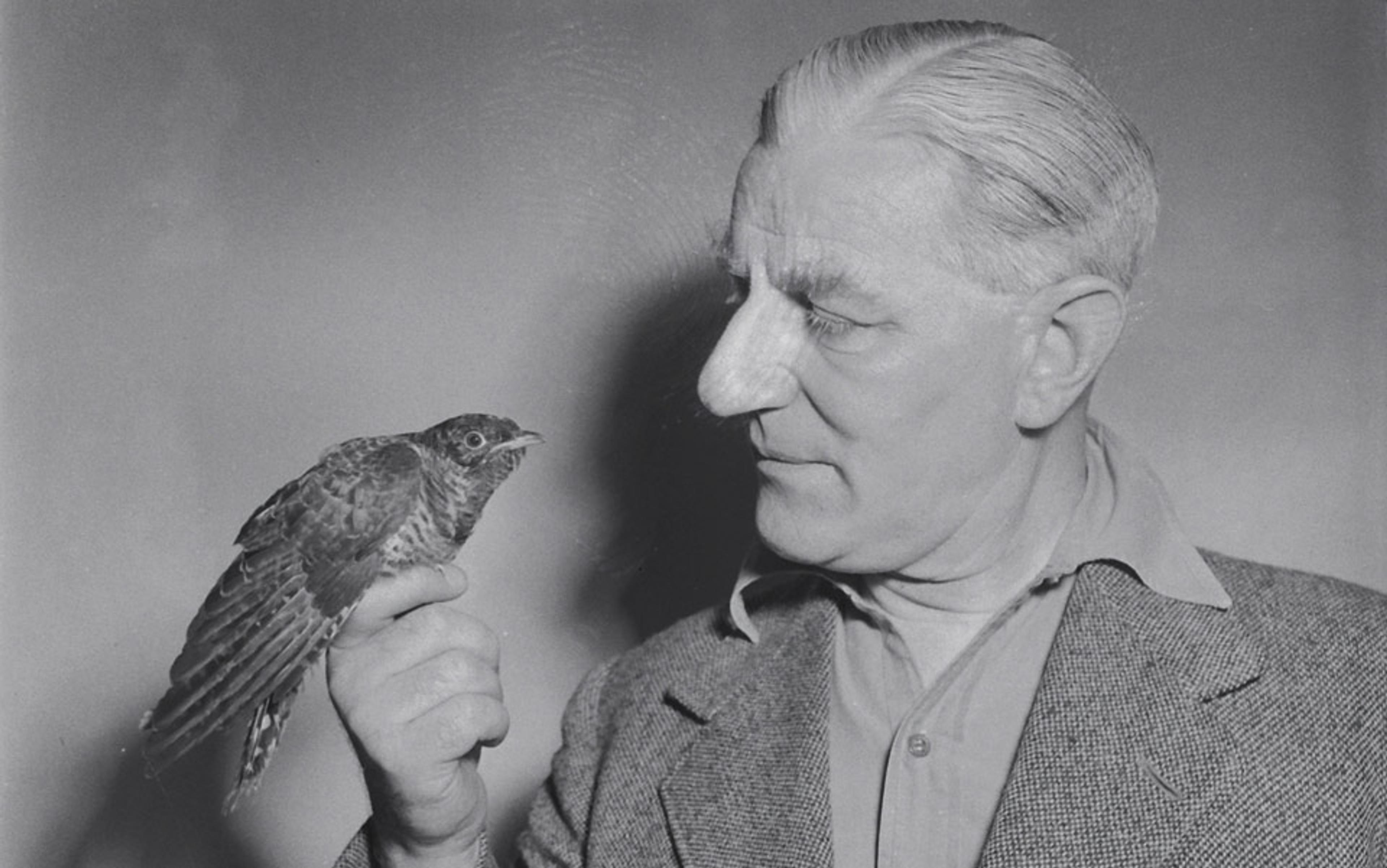
‘Plumage, voice, and soft peckings showed quite plainly that he was pleased and satisfied, and strokings and murmured soft words were much appreciated too.’
And indeed, the cuckoo’s life beautifully mirrored the concerns of Knight’s own. First, its sex life was mysterious and secretive. So was Knight’s: for years, he’d maintained a hearty heterosexual facade while picking up rough trade in local cinemas and employing local motorcycle mechanics for reasons other than repairing motorcycles. Second, cuckoos were the avian equivalents of the officer-controller of penetration agents; they ‘insinuated’ their ‘chameleon eggs’ into the nests of their ‘dupes’. A single cuckoo might lay eggs in as many as 12 nests, Knight explained, finding them by perching on a ‘convenient lookout post from which she spies out the land with a sharp and particular eye’. Cuckoos were also ‘competent and ruthless’, and their secret identity was never compromised. Knight didn’t share Smith and Hosking’s conclusion that birds had an ‘innate concept of “cuckoo”’. Far from it. He maintained that birds never knew they were cuckoos at all. Cuckoos lived their cover. Knight’s view was that other birds attacked them because they resembled, or ‘passed’, as hawks.
As Knight reared Goo, his cuckoo, the careful boundaries he’d drawn between the worlds of animals and man, between agent and handler, began to crumble. He was delighted to observe the fledgling’s initial aggression turning to absolute tameness and trust. Goo also had a ‘very remarkable’ discriminatory ability, and was easily able ‘to sort out its regular friends from newcomers’. The words Knight used to describe Goo’s behaviour were highly charged: friends, newcomers, handlers — all categories from his secret life. And not just his career in the intelligence services, but his love life, too: Knight’s ‘friendly advances’ to the cuckoo were ‘reciprocated in full’. ‘Plumage, voice, and soft peckings showed quite plainly that he was pleased and satisfied, and strokings and murmured soft words were much appreciated too.’ Reading Knight’s book you sense his delight that this mysterious cuckoo has been turned, but also his disconcerted half-knowledge that what it has turned into is a strange, feathered proxy for Knight himself. For the first time, Knight admits, troubled, he is not sure that the ‘gulf which exists between humans and other animals … is quite as wide as some people think’.
A Cuckoo in the House ends, of course, with the defection of Knight’s avian agent. Young cuckoos migrate to Africa. Flying free in Knight’s garden, Goo returned to his handler less and less frequently. Knight attached a numbered ring to the bird’s leg to identify it, should it return the following spring, and when Goo left for Africa, Knight mourned his loss. The cuckoo, he said, was ‘the most fascinating bird pet’ he had ever owned. Of course it was: he identified with it hugely, saw it mostly as himself.
The story of the cuckoo and the spymaster tells us that our understanding of animals is deeply influenced by the cultures in which we live. But it shows, too, that we can — and do — use animals as our proxies; we use them to speak for us, to say things that we cannot otherwise articulate. It also reveals that the meanings we give animals can be strangely robust. Just as Knight’s cuckoo was never just a bird, the cuckoos trapped and tagged as part of the British Trust for Ornithology’s current project are never solely data points on a map. No matter how precisely they are tracked on their long migrations, they are still birds of mystery, things much greater than small bundles of bones and muscle and grey feathers. They tell us things about ourselves; about the way we see our world, and they carry their strange human histories with them as they fly. The cuckoo’s reputation for secrecy, mystery and avian espionage survives intact; just as Knight’s cuckoo was embedded in the concerns of a secret state built of watchers, controllers and penetration agents, so the BTO cuckoos are firmly embedded in a contemporary world of satellite networks and global surveillance. Cuckoos track the world of espionage, just as the BTO tracks cuckoos.
